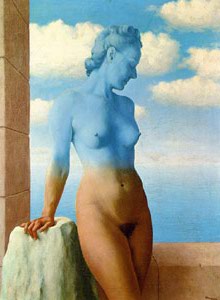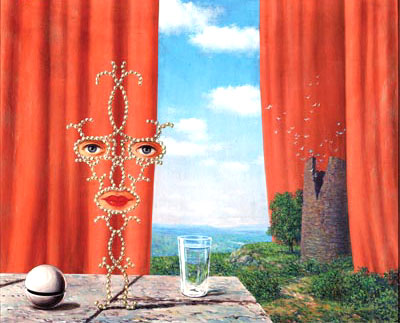| Tools: Save | Print | E-mail | Most Read |
| Magritte's Surrealism Exhibition Held in Beijing |
| Adjust font size: |
Sponsored by the National Art Museum of China and Brussels Fine Arts Center of Belgium, the exhibition displays more than 230 pieces that occupy three halls, including 35 oil-on-canvas works, two sculptures, 57 photographs, 22 archival letters, 33 musical creations and 69 watercolor paintings, sketches, frescos and posters. Magritte was an artist who expressed his philosophical ideas through imagery. With the vision of a poet and the thought patterns of a philosopher, he combined ordinary scenes and subject matter in a magical way, and presented the reality of life against an imaginative background. The purpose of his creation was, in his words, to present the subject matter from an angle that would never otherwise be noticed. In the exhibition, geometric figures accompanied by discrete color blocks are used to convey a plane among the foreground imagery and the background architecture. Pale-colored ceramics are draped with scarlet robes to form shapes reminiscent of human beings. And a painting of a nude woman conveys classical elegance, but her upper half is dyed a similar shade of blue as the background. Without any distortion, Magritte reproduced daily events and details in unexpected ways, creating moments that seem to come from waking after a dream or experiencing illusions stemming from an unclear state of mind. The Freudian theories of psychoanalysis that serve as the doctrine of Surrealist artists expounds that the truest thoughts of human beings dwell in these seemingly absurd and confused collages. Magritte visualized the unconscious and subconscious minds and raised questions with each of his creations. Equipped with his extraordinary imagination, he formed the style unique among surrealists. Magritte's surrealist style influenced many of his peers, including Dali and many young British and American artists. He reached his peak in the 1920s-30s, when most of his representative works were completed. Magritte called himself a meditator rather than an artist. Like an explorer, he always asked himself: "What I have seen? Is it true in my eyes? What does it mean? Is it what I want to see?" Magritte tried to answer these questions in his mind, using his paintbrush. And through this process, he gained true spiritual freedom.
(China Daily June 14, 2007) |
| Tools: Save | Print | E-mail | Most Read |
 |
| Related Stories |


